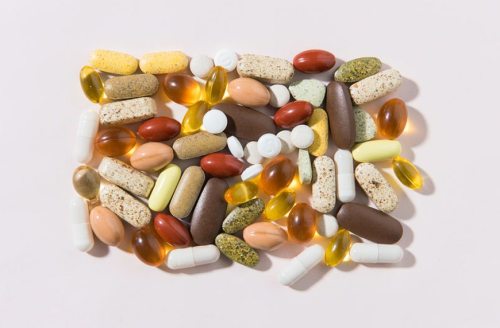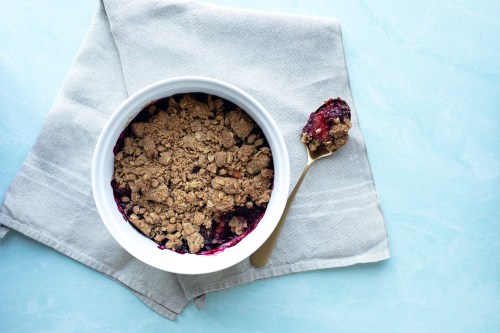Asking for a friend: What happens if I take a two-year-old vitamin?
Pop a pill only to realize it's past it's sell-by date? Here's the rundown on whether vitamins expire.

Picture this: You’ve decided to renew your healthy lifestyle in the new year, and thus are rummaging around your house for that bottle of crazy-expensive vitamins you bought a while ago that is still basically full. Vitamins = health, right? But then you discover (only after you’ve popped that vitamin in your mouth) that the expiration date is…way, way old. Like, #Jelena were still a thing when this bottle expired.
But do vitamins expire the same way that milk and meat does? Is it dangerous to pop a multivitamin once that “best by” date has actually passed? Before you ring up Poison control, here’s what you need to know about expired vitamins.
Is it dangerous to take expired vitamins?
The short answer: probably not. While you definitely want to stay far, far away from milk or chicken past its sell-by date, vitamins don’t really expire in the way certain foods do. But according to experts, the ingredients will degrade over time, meaning the vitamins you’re relying on for a nutrition boost may not be meeting your needs. You won’t suffer any ill effects, but you will have wasted time—and, if you accidentally bought expired vitamins at the store, money.
According to Harvard Medical School, citing a column published in Psychopharmacology Today, this holds true for most medicines as well as vitamins and supplements. A large study conducted by the Food and Drug Administration (FDA) on the military in the 1970s tested the potency of drugs stored for many years. (Because the military keeps such a large stockpile of medications, it’s incredibly expensive to replace the entire supply each time an expiration date passes.) As Harvard Health Publishing puts it, “What they found from the study is 90 percent of more than 100 drugs, both prescription and over-the-counter, were perfectly good to use even 15 years after the expiration date.”
But if you realize after the fact that you’ve taken an expired prescription medicine, it’s still a good idea to call your doctor to make sure you’re getting the coverage you need.
It’s also important to note that the FDA doesn’t regulate vitamins and other supplements the way it does pharmaceuticals. According to its website, in order to include an expiration date on a label, a manufacturer has to be able to back up the choice of date with data. Because of those requirements, the Mayo Clinic tells consumers to only buy vitamins and supplements that have dates on the packaging—that way you know they’ve at least undergone some kind of review.
How should I store my vitamins?
If stored properly, many vitamins have a shelf life of up to two years. (Vitamins that contain more moisture, such as capsules or gummies, will expire faster than that.) To make sure yours last, store them in a cool, dry place—not in the bathroom or kitchen where they’ll be exposed to heat and humidity, which can cause ingredients to degrade at a faster rate.
How should I dispose of expired vitamins?
If your vitamins are past their expiration date, it’s best to treat them as you would any other expired medication. That is, don’t just throw them in the trash (where they could be found and swallowed by curious small children or pets) or flush them down the toilet, where they could potentially contaminate the water supply. Instead, the Environmental Protection Agency (EPA) recommends mixing them with kitty litter or used coffee grounds, sealing the mixture in an airtight container, and then tossing the whole thing into a garbage can.
Even if the date on your vitamin bottle is months or years away, keep an eye on the contents. If you notice a change in the pills’ color or odor, dispose of them immediately—those kinds of changes could indicate the presence of mold or other contaminants that could be harmful for your health.
This article was originally published on October 7, 2017. It was updated on January 7, 2019.
Ever think to check the expiration date on your tampons? Here’s why you should. And this is what to do if you accidentally eat moldy bread.










